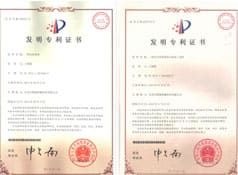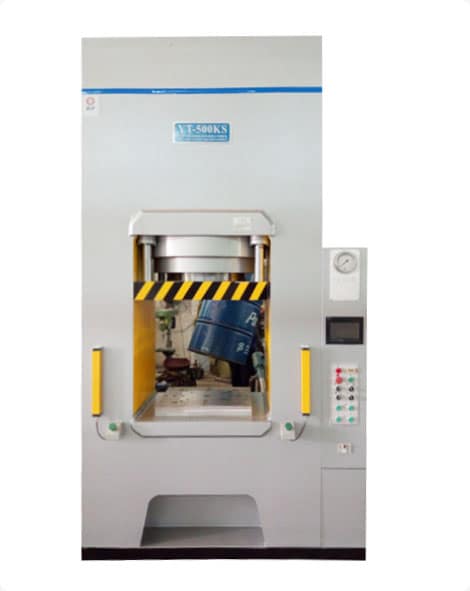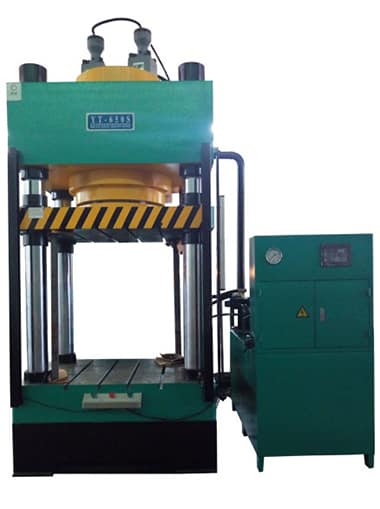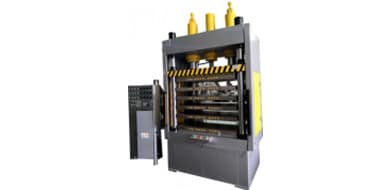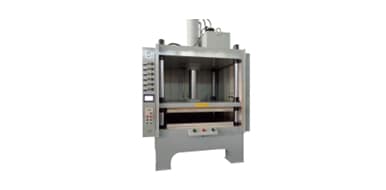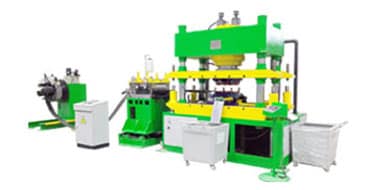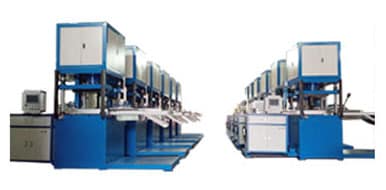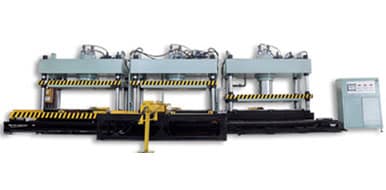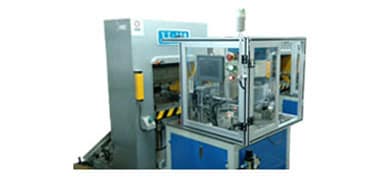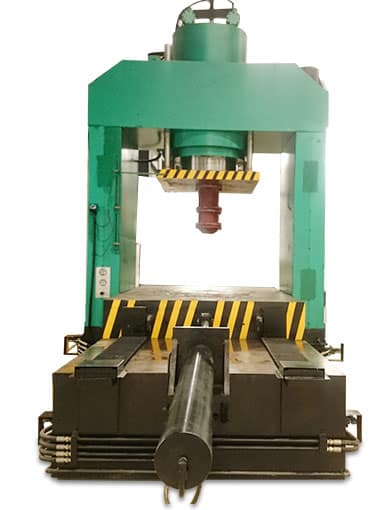How to Make Dies For Hydraulic Presses
time:2023-10-03 views:(点击 1,366 次)There are various types of hydraulic presses, ranging from smaller laboratory models to massive machines capable of applying several tons of pressure. They're often employed for industrial manufacturing processes or metal forming processes with tight specifications or tolerance requirements.
Place sheet metal covered with flexane onto the lower platen of a hydraulic press and use its arm jack to advance both parts together.
How to Make a Die
Hydraulic presses play an integral part of many industrial processes, from molding machine components and creating machine assemblies, to crushing waste and rubbish. Hydraulic presses can produce enormous force ranging from several tons produced by manually operated presses up to thousands produced by motor driven ones.
Under Pascal's principle, hydraulic presses rely on incompressible hydraulic fluid to generate mechanical force and power. They consist of two cylinders connected by two rods with one slave cylinder filled with hydraulic fluid connected to one larger master cylinder; its pressure transfers directly to the master cylinder through which mechanical pressure generated by this liquid pushes down on anvil of press onto piece of metal which then becomes part of die to form desired design.
Metalworking hydraulic presses are widely used in manufacturing, as they allow manufacturers to shape sheet metal into various shapes and forms quickly, accurately, and reliably. Additionally, these machines can bend, punch and shear metal as needed; coining is another popular use that utilizes closed dies that push metal against it to fill it into shape and profile of die. They are an efficient method for producing finished products quickly with accurate results.
Powder compacting is another integral function of hydraulic presses, and any of them can be used to compact powder samples for analysis by XRF. A hydraulic press used specifically for this task provides quick and more precise results than using traditional weighing scales alone.
Materials
Hydraulic die forming is an efficient method for producing metalwork on a budget and in smaller scales, using sheet metal sunk into dies to shape it into desired forms. Compared with Masonite die forming, hydraulic die forming requires less investment as sheet metal must only be placed inside one die before shaping; also quicker and simpler in use compared with Masonite die forming; however it requires careful design of dies in order for this method to function effectively.
A basic hydraulic press can be assembled using a welded steel frame containing a hydraulic ram inserted from an automotive fluid pump to press one die against another. When creating press dies and dies from copper or brass sheets cut slightly larger than intended shapes (with 3/8 inch extra around their perimeters), and removed after shaping has taken place, an initial form may be found for use.
Dies are typically constructed using a mixture of Devcon (preferred) and Anchor Seal epoxy resin thickened with thinner. Devcon is an excellent material for crafting tools, jigs, fixtures, metal forming dies, models, foundry patterns and molds and can be purchased from various tooling supply houses or hardware stores - it also can be found online. Once mixed it will be poured into a matrix mold such as an empty pipe section from centrifugal casting rig or metal flask before being sealed using masking tape and release agent coating.
Once Devcon is mixed and poured into the matrix mold, it should be allowed to cure for four hours - or shorter using a heat lamp - before being cut away from its punch die.
Design
Among many metalworking workshops, the hydraulic press can seem like an unnecessary piece of equipment. After all, its purpose may seem more suitable to crushing cars and scrap metal than creating jewelry or decorative metal objects. But its true potential lies elsewhere -- specifically die forming which allows users to create shapes they wouldn't be able to produce on their own such as Victorian chatelaines, buttons earrings rings and necklaces.
Die-forming success relies upon designing the appropriate die. Therefore, to get started on die forming successfully you must create a model first - be it wax, plaster or wood. Your model should be large enough to fit around the outline of a female die and include about 3/8 of an extra flange that can later be cut off and reused if necessary.
Once you have your model, place it in a container with a pipe, flask, or other strong metal band to prevent the Devcon from shattering when overpressed. Coat all three elements with release agent so it doesn't stick when making punches.
Once this has been determined, calculate the required plastic steel quantity to create your punch. Add the thicknesses of wrap material and workpiece thickness together to generate a new combined sheet thickness before selecting an opening in your die capable of accommodating this new combination. Any excessive clearance leaves burrs on sheared sheets and damages both punch and die while less clearance increases shear force while simultaneously decreasing shear strength.
Cutting
Hydraulic presses utilize compressive force to shape various parts. They can be used to cut, bend, stamp, draw, punch and coin metal workpieces into different forms and shapes. Hydraulic presses are often found in commercial and industrial manufacturing plants - their use reducing production time and improving quality while providing customized machines tailored specifically to specific requirements.
Hydraulic presses operate under pressures of several thousand tons and come equipped with safety features that can prevent accidents and protect employees, such as emergency stop buttons and pressure relief valves. They even come equipped with an inbuilt timer so workers can set the length of dwell at the bottom of each stroke for certain operations.
There are many varieties of hydraulic presses designed to fulfill specific functions. Although some models may be more versatile than others, each requires skill and experience for optimal operation. A four-column press is one popular type that uses four heavy-duty columns with large diametres to guide a moving platen or press slide precisely - helping prevent deflection and "lean-back."
Other types of hydraulic presses include C frame presses, deep drawing presses, and hydroforming presses. A hydraulic press can be configured to meet any job need.
To use a hydraulic press to create forms, first pad the die with flexane. Arrange sheet metal on top of this pad, and position the die accordingly. Pump the arm of a hydraulic jack until its lower platen advances past both flexane and die. As this occurs, pressure will build within both components, pushing them together into their desired positions inside the die.
Finishing
Once a die has been created, it can be used with a hydraulic press to form metal art. There are different ways of accomplishing this; two are blanking (cutting out shapes from coils or sheets of metal) and forming, the latter of which allows faster production times as it allows duplicating existing work more easily.
Sheet metal is placed between male and female dies that match in shape, then hydraulic pressure is applied between them. Forming can range from simple stamping with a punch to intricate processes involving hammer-and-anvil work.
When using a hydraulic press to mold metal, it's crucial that one has a thorough knowledge of how the machine operates and uses the appropriate tools and materials for their task. This is especially vital if creating pieces made out of precious metals like gold or silver.
An effective way of understanding how a hydraulic press works is by watching it in action and studying its inner workings. A common type of hydraulic press is a screw press with a ram that lowers to compress workpiece between dies; its position can also be altered according to what operation is being carried out.
Hydraulic presses make metal art easy, with limitless potential applications. A person could use one for anything from jewelry creations to Christmas ornaments; and many metal artists even use hydraulic presses to craft intricate sculptures like eagles and deer barettes! Before pressing, make sure that the art form is balanced and centered properly, then finish as desired afterwards.
Link to this article: https://www.ihydraulicpress.com/nsn/4983.html
Hot Articles
-
How to Make a Tincture Press
Tinctures made of pure grain alcohol may last indefinitely and be more effective than pills, capsules or tea; however, they must be created carefu……
-
Can You Make a Tortilla With a Hydraulic Press?
Hydraulic presses can be an indispensable asset to any kitchen. From creating tortillas to shaping metals, a hydraulic press can serve many import……
-
How to Make Hydraulic Press Machine
If you need to apply large amounts of pressure in your shop, consider building your own hydraulic press machine. To do so, scour around for scrap ……
-
How Much Is a Hydraulic Press?
Hydraulic presses are powerful machines capable of shaping, shaping and stamping materials with incredible precision and power that other machines s……
-
How to Make a Knife Using a Hydraulic Press
Hydraulic presses are powerful tools used by numerous manufacturers. A typical hydraulic press consists of a frame housing two connected cylinders; ……
-
How to Make a Hydraulic Shop Press
A hydraulic shop press is an indispensable piece of machinery when it comes to many aspects of metalwork, fabrication and assembly operations. With ……
-
How to Make a Manual Hydraulic Press
Manual hydraulic presses are powerful machines capable of producing considerable force. These presses can be used for various tasks, including sam……
-
How to Make Hydraulic Press Plates
Hydraulic presses are essential components of a well-organized car repair station. Used for bending and straightening parts, replacing bearings an……
Latest News
-
Can a Hydraulic Press Make a Diamond?
Diamonds are one of the hardest naturally-occurring minerals on Earth. But that doesn’t make them indestructible – you can crack a dia……
-
Hydraulic Press Channel
The Hydraulic Press Channel on YouTube is one of YouTube’s more peculiar success stories, featuring Lauri Vuohensilta crushing stuff with his ……
-
How to Make a Hydraulic Shop Press
An effective hydraulic shop press can help you to bend metal, stamp materials and more. There are various types and sizes of shop presses suited f……
-
How to Make Small Hydraulic Press at Home
Every garage master knows that having access to a press can be invaluable when repairing bearings, silent blocks or simply packing more compactly. W……
-
How to Make a Hydraulic Press
Have you seen hydraulic presses featured in videos posted to social media? These incredible machines create incredible amounts of pressure to mold m……
-
Hydraulic Press Channel – How Much Money Does Lauri Vuohensilta Make From YouTube?
Lauri Vuohensilta and his wife quickly rose to fame after seeing their video of crushing printer paper with their hydraulic press make the front pag……
-
How to Make a Coin Using a Hydraulic Press
Properly utilized, hydraulic presses can be an incredibly precise tool. From car shops to metalworking shops, hydraulic presses have the power of ……
-
How to Make a Wooden Hydraulic Press
Hydraulic presses can be an indispensable asset when it comes to DIY projects, from glueing woodwork together and crushing objects to creating briqu……


